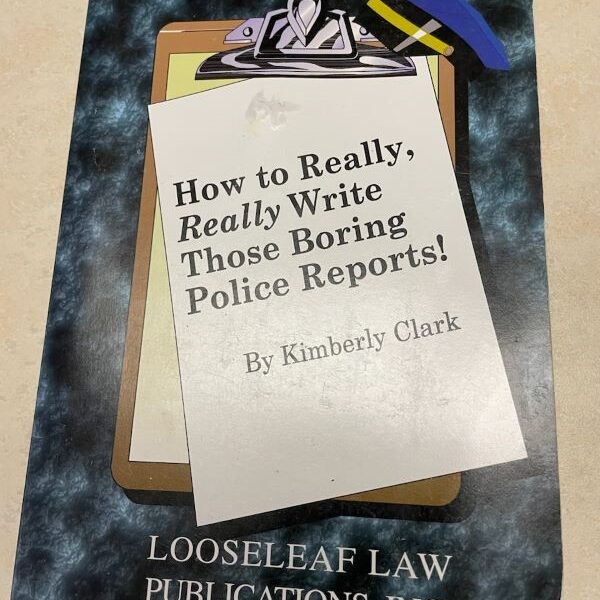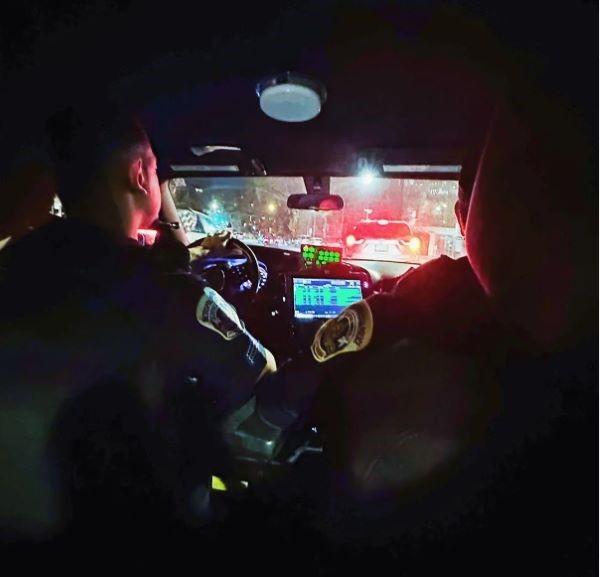
First, it was the Taser. Then it was the body-worn camera. Now, the maker of those two pieces of police technological equipment, Axon (formerly Taser International), has engineered “Draft One,” an artificial intelligence-based tool to “Rewrite Report Writing” and enable law enforcement officers more time for patrol duties by cutting down on traditional notetaking, paper-stacking, and physically typing detailed accounts of events involving police actions.
With the advent of this latest marvel in policing, Draft One is designed to revolutionize inherent report-writing by LEOs by coupling it with Axon’s body-worn cameras (BWCs), essentially using a cop’s recorded interactions by transposing the narrative from audio content captured with footage.
The Palm Beach County Sheriff’s Office (PBSO) in Florida is touting that it is “among the first in the nation to implement Axon’s revolutionary report-writing tool” so that its deputies can invest more time in patrol functions by having the AI-based tool expedite requisite documentation of criminal and other incidents.
Per a PBSO spokesperson, “Draft One harnesses the power of audio from our body-worn cameras to automatically generate report narratives. This cutting-edge technology ensures consistent grammar and clarity in our reports and significantly reduces the time our deputies spend on paperwork.”
With a smirk on my face, I reminisce the days of yonder at the police academy, spending a full week (roughly 40 hours, with revisitation here and there based on the instructor), concentrating on the report-writing block…
Structure. Concise. Facts. Chronology. Legal acumen. No fluff. The proverbial Who, What, When, Where, and How in forming non-fiction incidents involving law enforcement interventions recorded for courts and agency archives.

That depicts the police academy textbook my class of recruits studied in the week-long Report Writing block—all 120 pages. The book was published over two decades ago before Tasers and BWCs were a blip on the radar of things to come to policing.
Fast forward, artificial intelligence (AI) takes the wheel, with Draft One doing most of the documentation work.
According to Axon, “Police officers spend up to 40% of their time writing police reports.”
It always felt like much more than that. For cops to strike an equilibrium among patrolling, investigating, arresting, transporting suspects to the county jail, and somehow squeezing in a meal, report writing was always waiting on me.
My department’s protocol was to sit idle at any location in the most crime-ridden parts of the city, typing reports on in-car laptops while “being seen” in a fully marked police cruiser. Agency protocol also held that any officer whose reports were not submitted before the completion of the 12-hour shift could “holdover” until the next duty day, providing it was in succession.
If it was the squad’s Friday, before days off were slated, overtime must be approved to button up the report(s) before going off duty for a spell.
Why behind on writing reports? The same reason necessitating reports: Calls for service, every patrol officer’s priority.

(Photo courtesy of the South Bend Police Department.)
Again, there were no BWCs back then. All investigatory details were recorded by putting pen to paper and compiling the gist in a 3” X 5” pocket notepad issued by the department.
Per Axon’s press release, “Draft One is a force multiplier for officers, leveraging generative AI and body-worn camera audio to produce high-quality draft report narratives in seconds” with “safeguards to ensure accuracy and accountability.”
(Quick anecdotal revelation: If the prosecuting attorney asked an arresting officer rhetorical questions mere minutes before courtroom trials commenced, it may be due to report-writing deficiencies.)
As Axon notes, “…clearer, more concise and consistent reports help accelerate justice.”
Less Time on Paperwork Means More Time for Police Work
Axon conducted a case study, interviewing frontline police personnel who use their report-writing product, and the law enforcement administrators who sought a better way to ensure efficacy in the public safety mission.
From what I have reviewed, Draft One populates much of the narrative from the officer’s body-worn camera’s audio but also prompts “[Insert such and such here] to alert the report-writing officer of formal details needing inclusion…details lacking in the BWC audio, so editing is still necessary, albeit to a lesser extent.
At the Palm Beach County Sheriff’s Office, they underscore the inherent benefits of Draft One effectively doing more proactive duty due to the AI software serving as a transcriptionist:
“By streamlining the report-writing process, Draft One allows our deputies to focus more on what truly matters: serving and protecting our community. With more time for patrol duties, we are enhancing our commitment to public safety and efficient law enforcement.”

(Photo courtesy of the Metro DC Police Department Reserves.)
Although I will infinitely implore law enforcement agencies to hire cops and continue diligent recruitment efforts, Draft One technology may also benefit police organizations whose sworn strength is below standards.
If Axon’s AI products enable beat cops to spend less time behind a computer (writing reports), then it would seem a welcome Band-Aid to have Draft One’s concept capabilities free up cops for increased patrol presence, especially in an era when police recruitment is challenging due to negativistic attitudes regarding law enforcement and the profession’s profound instances whereby encounters evolve unpleasantly due to suspects’ bad behaviors and poor decisions.
Make a difference. Support the NPA.